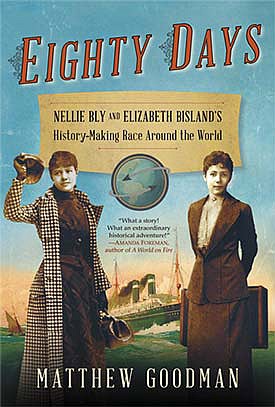In 1889, floundering circulation numbers led the editors of Joseph Pulitzer's newspaper, The World, to search for "something sensational - a story that would rivet the public's attention and not just for a day or two, but for months on end. ... Finally they had found what they wanted. It was (a) story that Nellie Bly ... had suggest a year before."
The celebrated woman reporter would travel, unaccompanied, around the world. In fact, she would aim to beat Phileas Fogg's fictional record by five days. While Bly was best known for her undercover investigative reporting, this story would shed light on modern travel and, of course, draw readers back to the paper. With only two days of preparation, Bly boarded the steamship Augusta Victoria and headed for Europe.
Meanwhile, John Brisben Walker, owner of The Cosmopolitan monthly magazine, read about Bly's trip and was convinced weather would make traveling east around the world a mistake. He was convinced The World's reporter would fail. Walker believed he could use his rival publication's stunt to increase readership for The Cosmopolitan. Unknown to Bly or her editors, within hours of her leaving New York, Walker would send another woman reporter around the world, this time traveling west. With only hours' notice, Elizabeth Bisland would board a westbound train in New Jersey. Her instructions: beat Nellie Bly back to New York.
Author Matthew Goodman's "Eighty Days" is a true story of events inspired by Jules Verne's "Around the World in Eighty Days." It is a winning combination of adventure, history and social commentary. Through Bly and Bisland, both pioneering women reporters, he shows readers 19th-century British Empire, steam-era travel and the workings of post-Civil War newspapers in America. Readers will love the history, but it's the race that will keep them reading to the end.
Paula Schulte is the marketing coordinator for Missouri River Regional Library.

